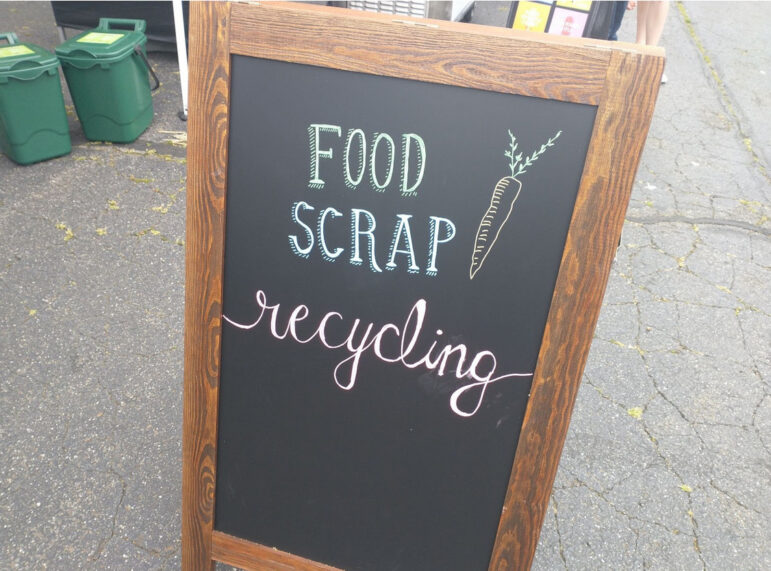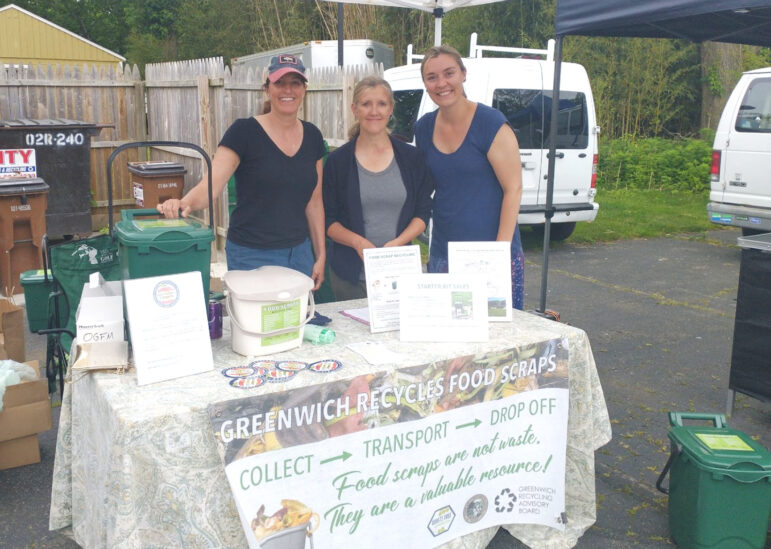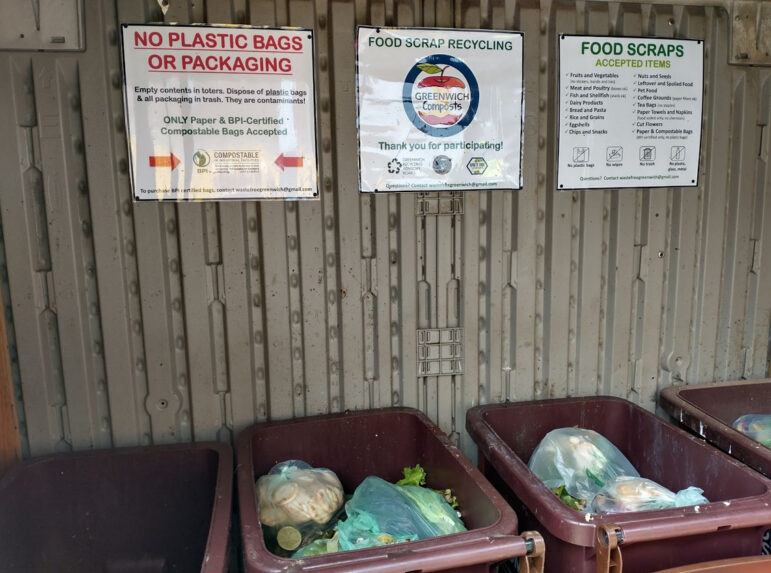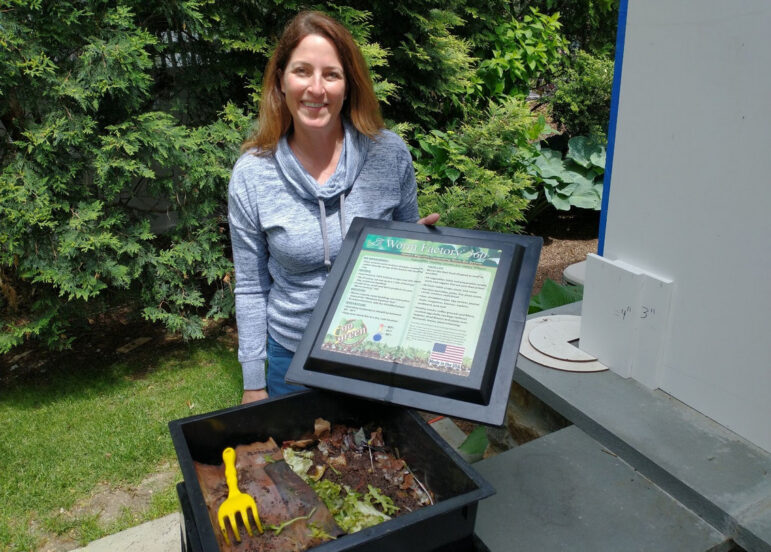Written by Kade Tibberts, GHS Class of 2021
Wednesday, June 2 marked the opening of the Old Greenwich Farmers Market and with it, a second location for food scrap collection.

The Food Scrap Recycling Program was created in partnership between Waste Free Greenwich, Greenwich Recycling Advisory Board, and Greenwich Green & Clean. It is a free and voluntary program that allows Greenwich residents to collect their food scraps and take them to a collection site in order to be composted. The first site opened on June 15, 2020 at the Holly Hill Transfer Station.
“We sent out a survey to our mailing list to see how things were going a few months in, and a lot of people said they wanted a sight on the eastern side of town for collection so we aren’t driving all the way to Holly Hill,” said Julie DesChamps, the founder of Waste Free Greenwich.
Participants in the program can now drop off their food scraps at the Old Greenwich Market’s Farmer, located at the Living Hope Church, on Wednesdays between 2:30-6 pm.

It completes the loop, having food scrap collection at the Old Greenwich Farmers market,” Ms. DesChamps explained. “You are seeing this entire loop, your discarded scraps turning into food at the market locally. It highlights what a rich, valuable resource compost is… It is a natural cycle.”
Waste Free Greenwich was created to address Greenwich’s overall approach to waste.
Organic waste is over a third of the waste stream, with over 22% of waste being food scraps. This wastes not only the food itself, but the resources that went into making the food, such as the land, wildlife habitats, water, pesticides, and labor. Food waste in landfills is also a significant source of greenhouse gases.
This is even more relevant with the current waste crisis in Connecticut. There are only five incinerators in Connecticut and the largest of those, located in Hartford, is scheduled to close. Waste Free Greenwich worries that Greenwich residents will soon have a large problem with their waste. They see the best solution is to create less waste in the first place.

As the Food Scrap Recycling Program nears its one year anniversary, the program has made an impact on the community. DesChamps estimates that between 650 and 750 households are participating in the program. This is about 3% of all Greenwich residents.
“The residents have been amazing,” DesChamps said. “They send us feedback all the time, how they are grateful for the program, how their waste habits have shifted so much, how they cut their garbage by 50% just by pulling out the food scraps, how they can never imagine putting food back in their garbage can again.”
DesChamps is also grateful for the public-private partnerships that have allowed this change to occur. The food waste recycling program has received the aid of the Greenwich Recycling Advisory Board, the Holly Hill Transfer Station, Greenwich Community Gardens, Sam Bridge Nursery & Greenhouses, Save the Food, Greenwich Green & Clean, and of course the Old Greenwich Farmers Market.
For the future, DesChamps hopes to spread word on backyard composting and how to prevent food waste in the first place. Waste Free Greenwich hosted two events with chefs Lindsay-Jean Hard and Raquel Rivera, teaching residents how to cook with scraps.
They hope to teach residents to shop their refrigerators before they shop at the grocery store by being mindful of what is in their pantry and cooking with leftovers. They can also better understand what an expiration date is, since some “use by” dates are a reflection of quality, not a safety issue.

They also plan to educate Greenwich residents on the impact of food waste on designated environmental justice communities. Three of the five incinerators in Connecticut are located near communities of color or low-income communities who disproportionately face the effects of pollutants caused by industry, incinerators and transfer stations.
Waste Free Greenwich plans to have a screening of the movie Sacrifice Zone and then host a local panel. “We are hoping to hit home that our daily habits have an impact on other communities and we have to be more mindful of our actions,” DesChamps said.
There is a lot on the horizon for waste management in Greenwich and DesChamps hopes to bring in as many residents as possible to the food scrap recycling program.
More information is available on the Waste Free Greenwich website https://www.wastefreegreenwich.org/,
Food scraps can be brought to the Holly Hill Transfer Station throughout the week or to the Old Greenwich Farmers Market on Wednesdays.